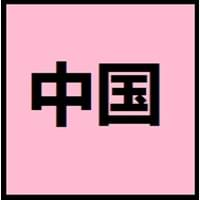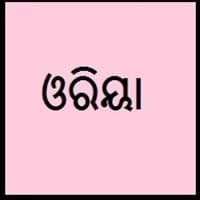Countries
China, Hong Kong, Macau, Singapore, Taiwan
India
National Language
China, Taiwan
India
Second Language
Republic of Brazil
Not spoken in any of the countries
Speaking Continents
Asia
Asia
Minority Language
Indonesia, Malaysia
Not spoken in any of the countries
Regulated By
Chinese Language Standardization Council, National Commission on Language and Script Work, Promote Mandarin Council
Not Available
Interesting Facts
- Chinese language is tonal, since meaning of a word changes according to its tone.
- In Chinese language, there is no grammatical distinction between singular or plural, no declination of verbs according to tense, mood and aspect.
- The earliest literature in Oriya was traced in 7th to 9th centuries.
- Since Odia is having a long literary history and has not borrowed largely from other languages, it is the 6th classical language in India.
Similar To
Not Available
Bengali and Assamese
Derived From
Not Available
Sanskrit Language
Alphabets in
Chinese.jpg#200
Oriya-Alphabets.jpg#200
Scripts
Chinese Characters and derivatives
Bengali, Odia alphabet (Brahmic)
Writing Direction
Left-To-Right, Horizontal, Top-To-Bottom
Left-To-Right, Horizontal
Hello
您好 (Nín hǎo)
ନମସ୍କାର (namascara)
Thank You
谢谢 (Xièxiè)
ଧନ୍ୟବାଦ୍ (dhanyabaad)
How Are You?
你好吗? (Nǐ hǎo ma?)
କେମିତି ଅତ୍ଚନ୍ଥି? (kemiti achanti?)
Good Night
晚安 (Wǎn'ān)
ସୁଭରାତ୍ର (shubharaatra)
Good Evening
晚上好 (Wǎnshàng hǎo)
ସୁଭସନ୍ଧ୍ୟା (subha sandhya)
Good Afternoon
下午好 (Xiàwǔ hǎo)
ସୁଭ ଖରା ବେଳ (shubha kharaa bela)
Good Morning
早安 (Zǎo ān)
ସୁପ୍ରଭାତ (suprabhaata)
Please
请 (Qǐng)
Not Available
Sorry
遗憾 (Yíhàn)
ମୁଁ ଦୁଃଖିତ (mū duḥkhita)
Bye
再见 (Zàijiàn)
ସୁବିଦାୟ (shubidaaya)
I Love You
我爱你 (Wǒ ài nǐ)
ମୁଁ ତୁମକୁ ଭଲ ପାଏ (mu tumoku bhala paye)
Excuse Me
劳驾 (Láojià)
କ୍ଷମା କରିବେ (kyamā karibe)
Dialect 1
Mandarin
Baleswari
Where They Speak
China, Malaysia, Singapore, Taiwan
India
How Many People Speak
Not Available
Where They Speak
China, United States of America
India
How Many People Speak
Not Available
Where They Speak
China, Malaysia, Singapore, Vietnam
India
Second Language Speakers
Not Available
Native Name
中文 (zhōngwén)
ଓଡ଼ିଆ (ōṛiyā)
Alternative Names
Not Available
Odisha, Odri, Odrum, Oliya, Uriya, Utkali, Vadiya, Yudhia
French Name
chinois
oriya
German Name
Chinesisch
Oriya-Sprache
Pronunciation
Not Available
[ˈoɽia]
Language Family
Sino-Tibetan Family
Indo-European Family
Subgroup
Not Available
Indo-Iranian
Branch
Not Available
Indic
Early Forms
No early forms
No early forms
Standard Forms
Standard Chinese
Standard Odia
Signed Forms
Wenfa Shouyu 文法手語 ("Grammatical Sign Language", Signed Mandarin (Taiwan))
Indian Signing System
Scope
Individual
Individual, Macrolanguage
ISO 639 6
Not Available
Not Available
Glottocode
sini1245
macr1269
Linguasphere
79-AAA
No data available
Language Type
Living
Living
Language Linguistic Typology
Subject-Verb-Object
Subject-Object-Verb
Language Morphological Typology
Analytic, Isolating
Not Available
All Chinese and Oriya Dialects
Most languages have dialects where each dialect differ from other dialect with respect to grammar and vocabulary. Here you will get to know all Chinese and Oriya dialects. Various dialects of Chinese and Oriya language differ in their pronunciations and words. Dialects of Chinese are spoken in different Chinese Speaking Countries whereas Oriya Dialects are spoken in different Oriya speaking countries. Also the number of people speaking Chinese vs Oriya Dialects varies from few thousands to many millions. Some of the Chinese dialects include: Mandarin, Wu. Oriya dialects include: Baleswari , Ganjami. Also learn about dialects in South American Languages and North American Languages.
Chinese and Oriya Speaking population
Chinese and Oriya speaking population is one of the factors based on which Chinese and Oriya languages can be compared. The total count of Chinese and Oriya Speaking population in percentage is also given. The percentage of people speaking Chinese language is 16.00 % whereas the percentage of people speaking Oriya language is 0.50 %. When we compare the speaking population of any two languages we get to know which of two languages is more popular. Find more details about how many people speak Chinese and Oriya on Chinese vs Oriya where you will get native speakers, speaking population in percentage and native names.
Chinese and Oriya Language Codes
Chinese and Oriya language codes are used in those applications where using language names are tedious. Chinese and Oriya Language Codes include all the international language codes, glottocodes and linguasphere.





